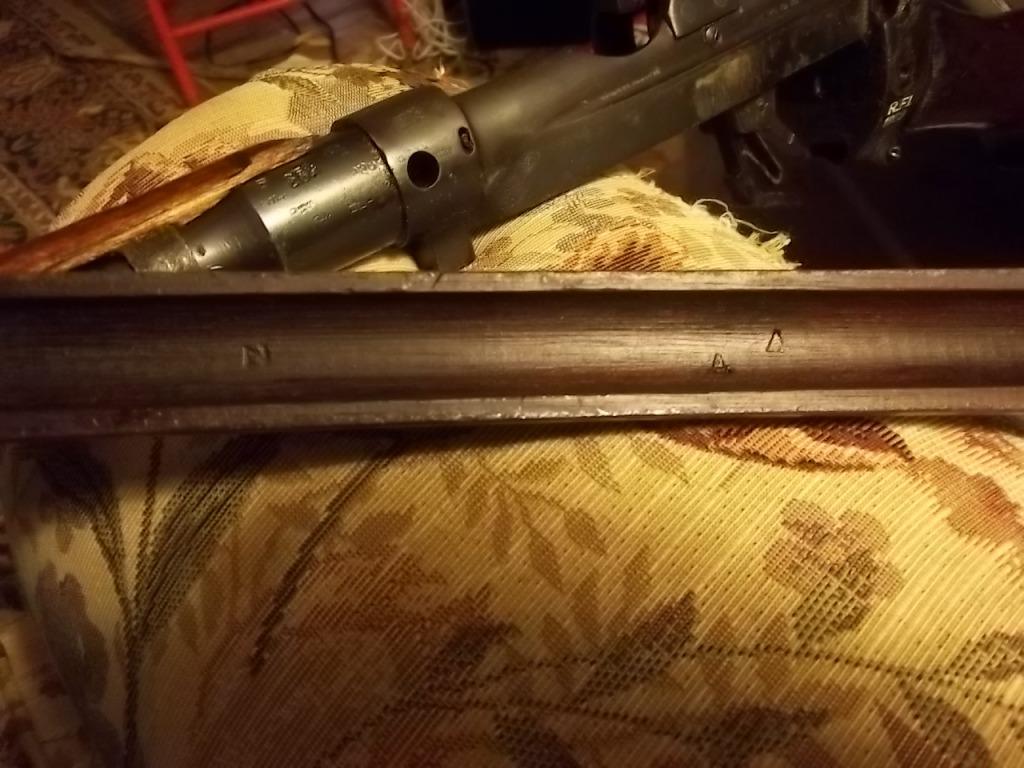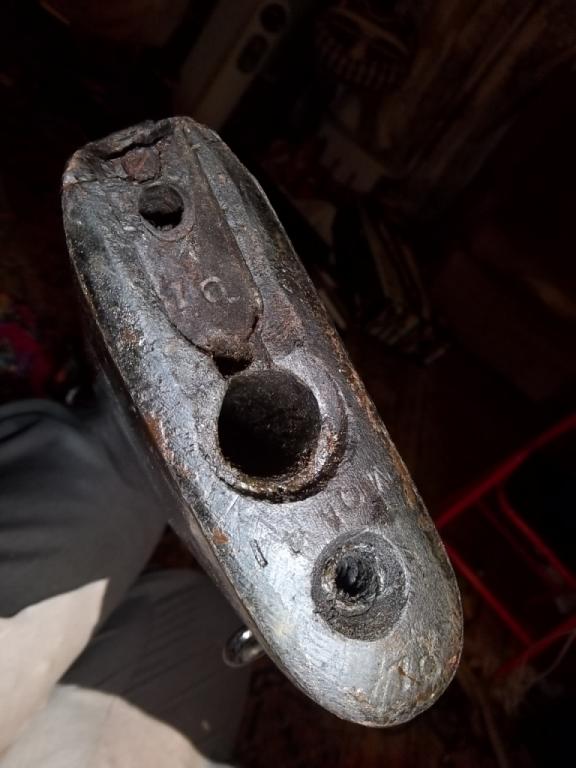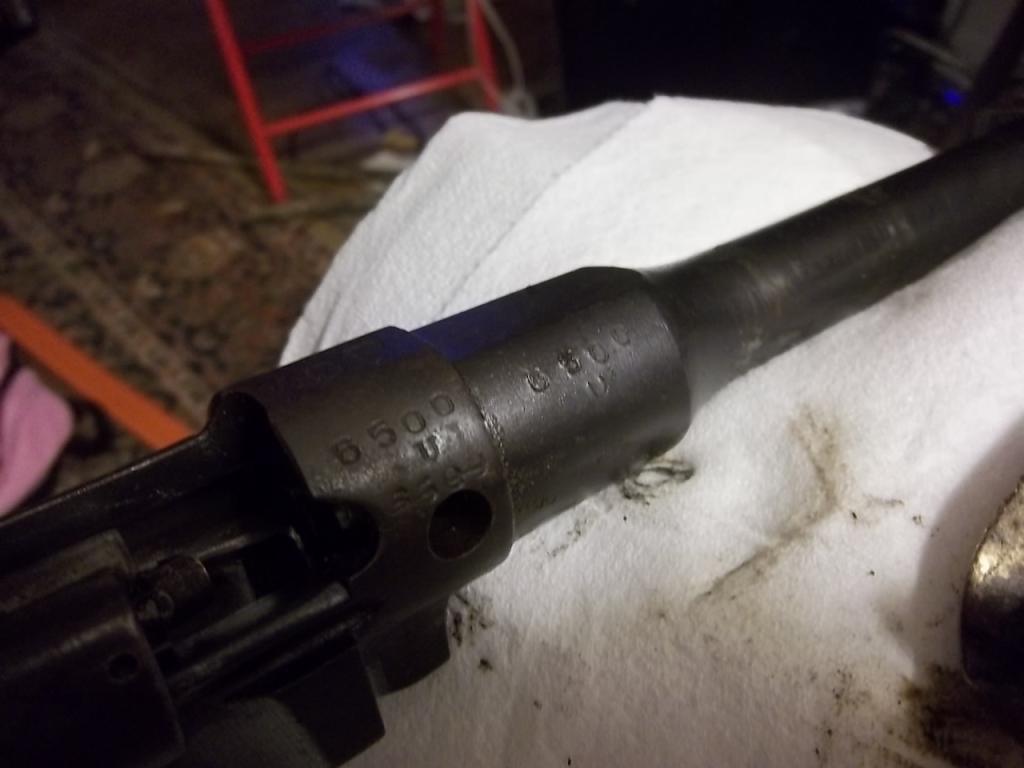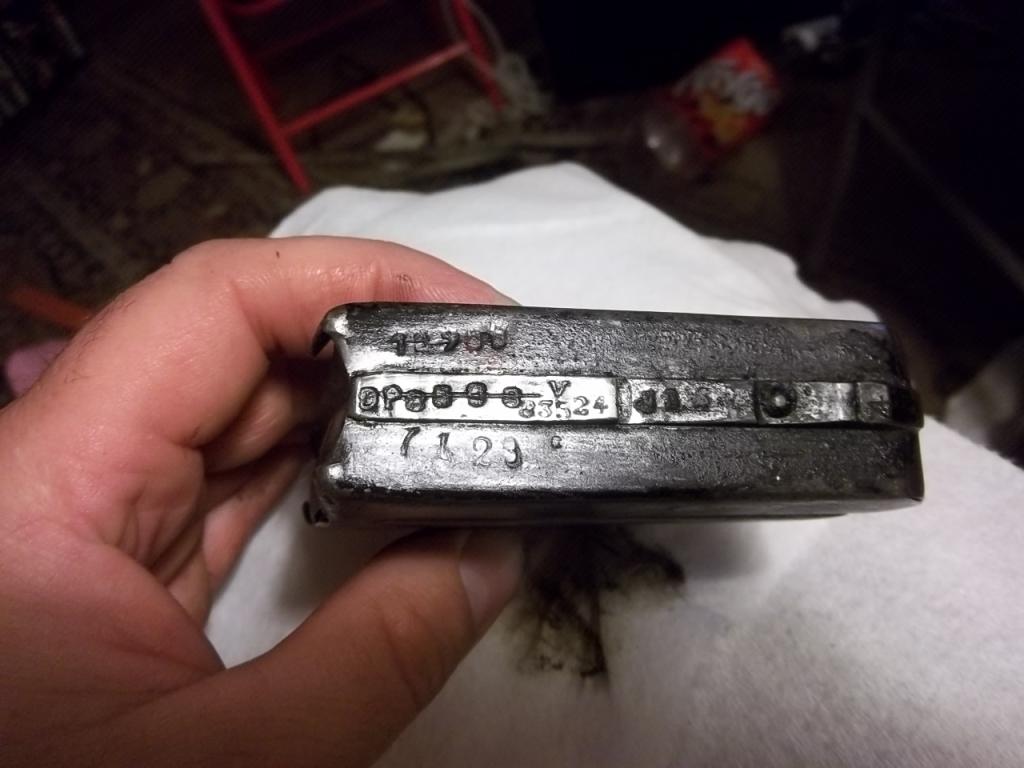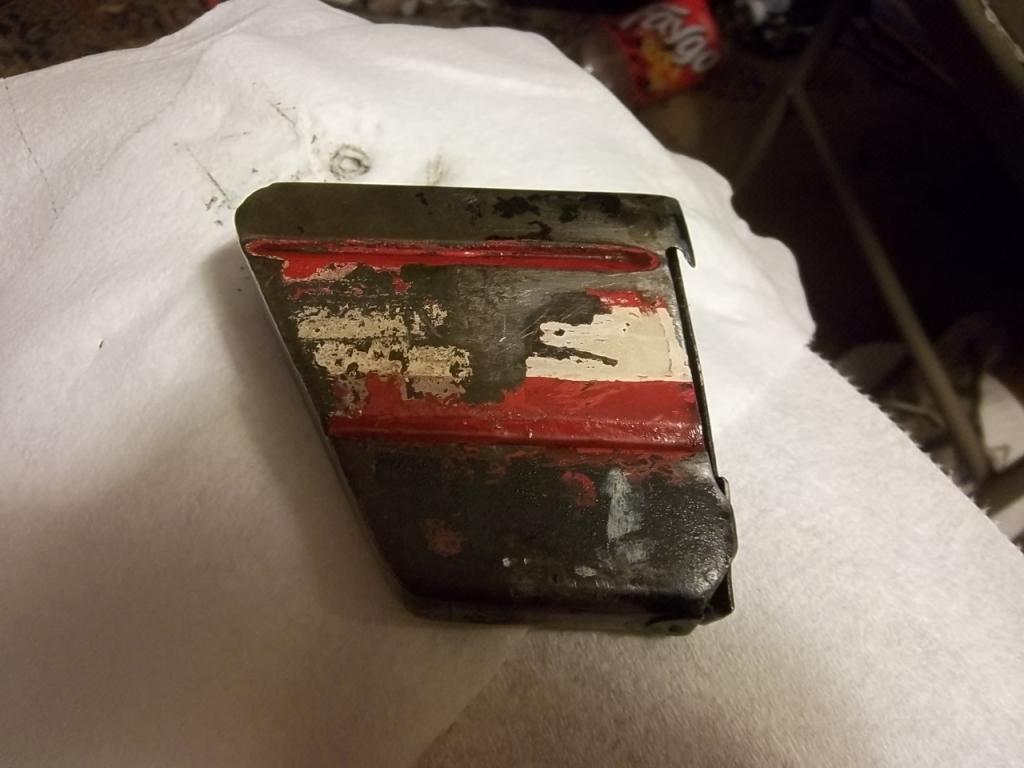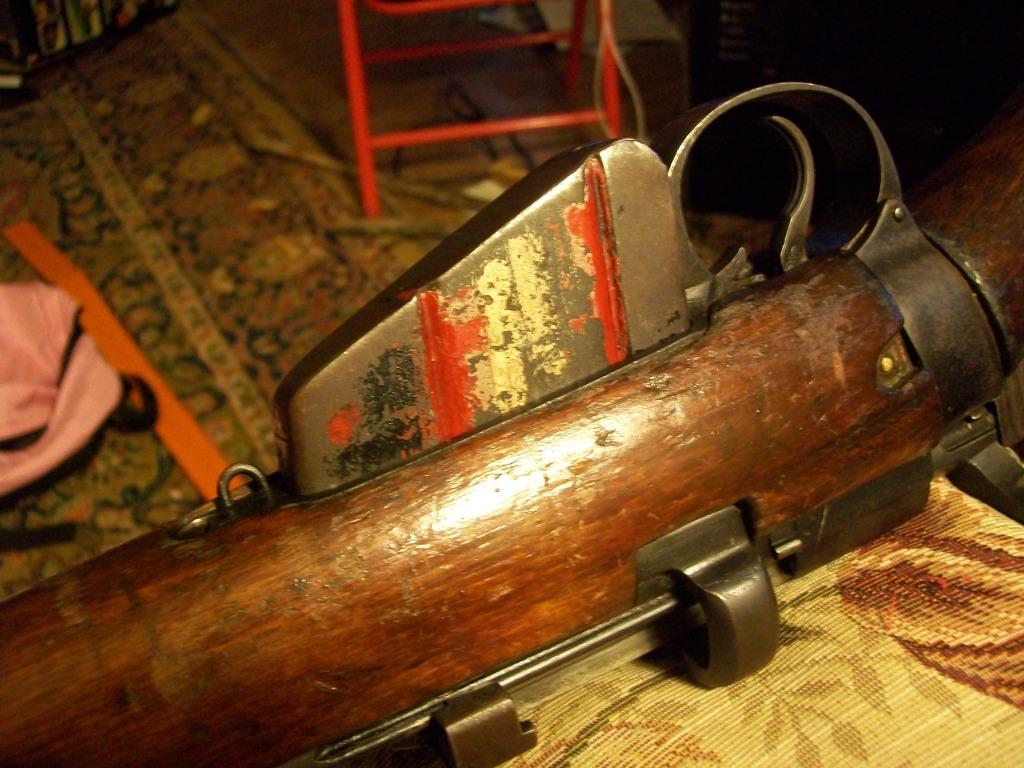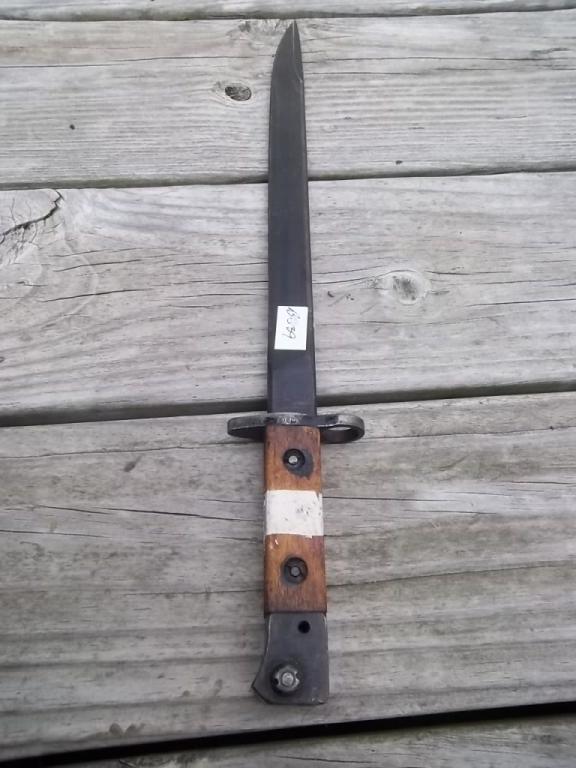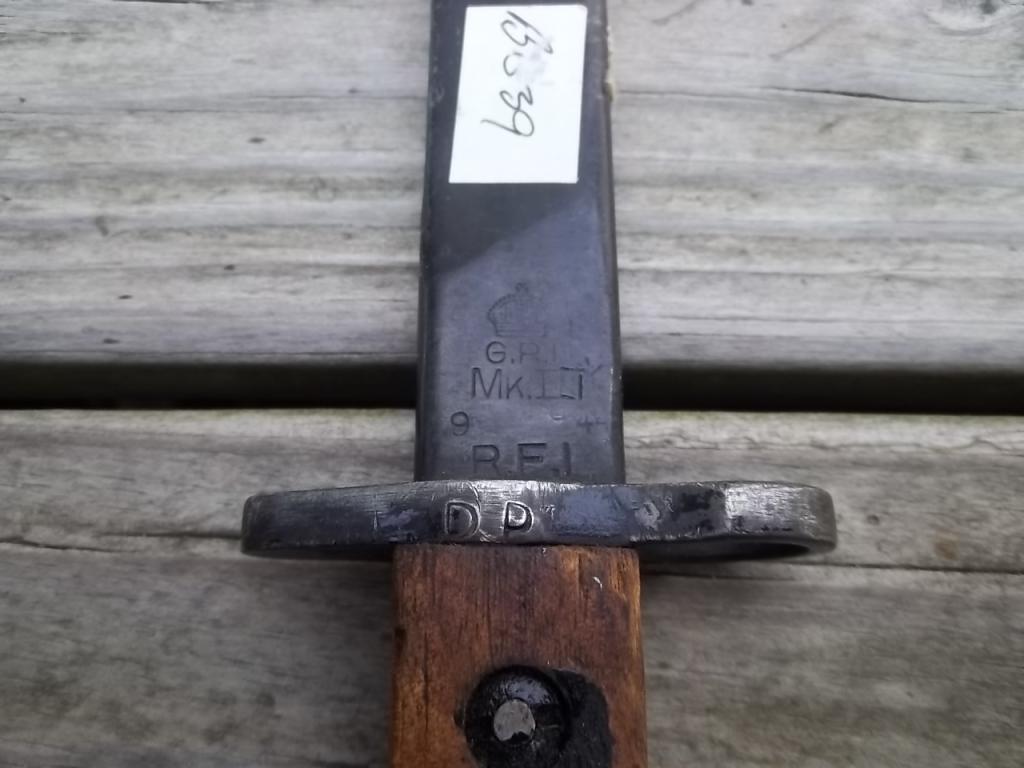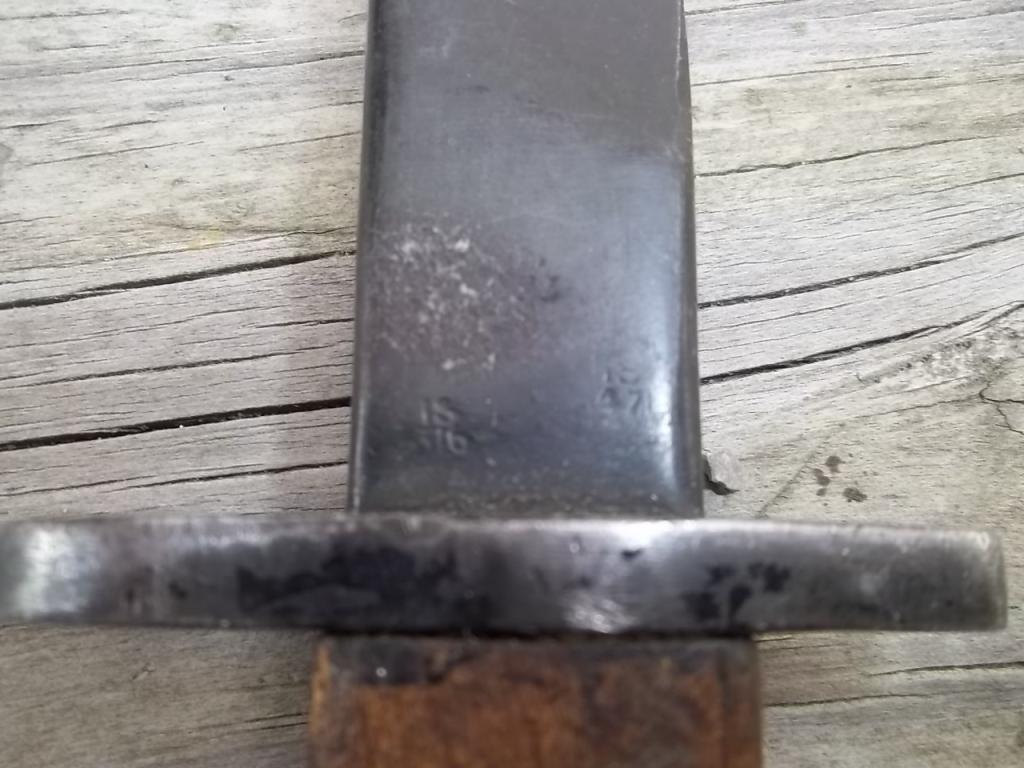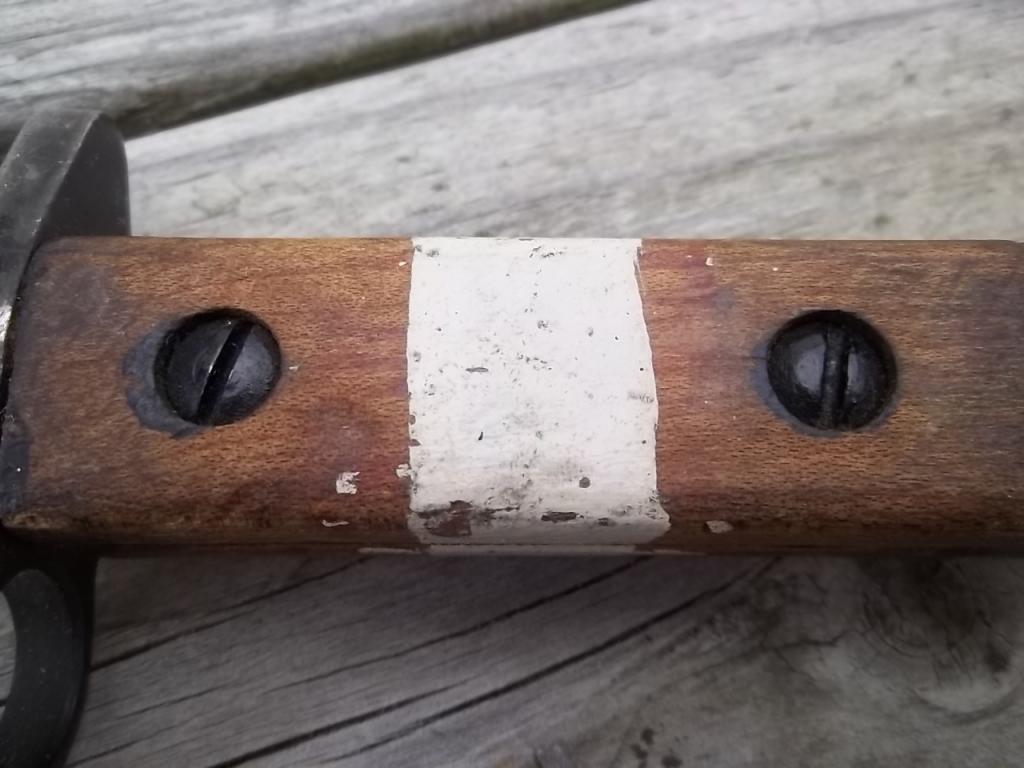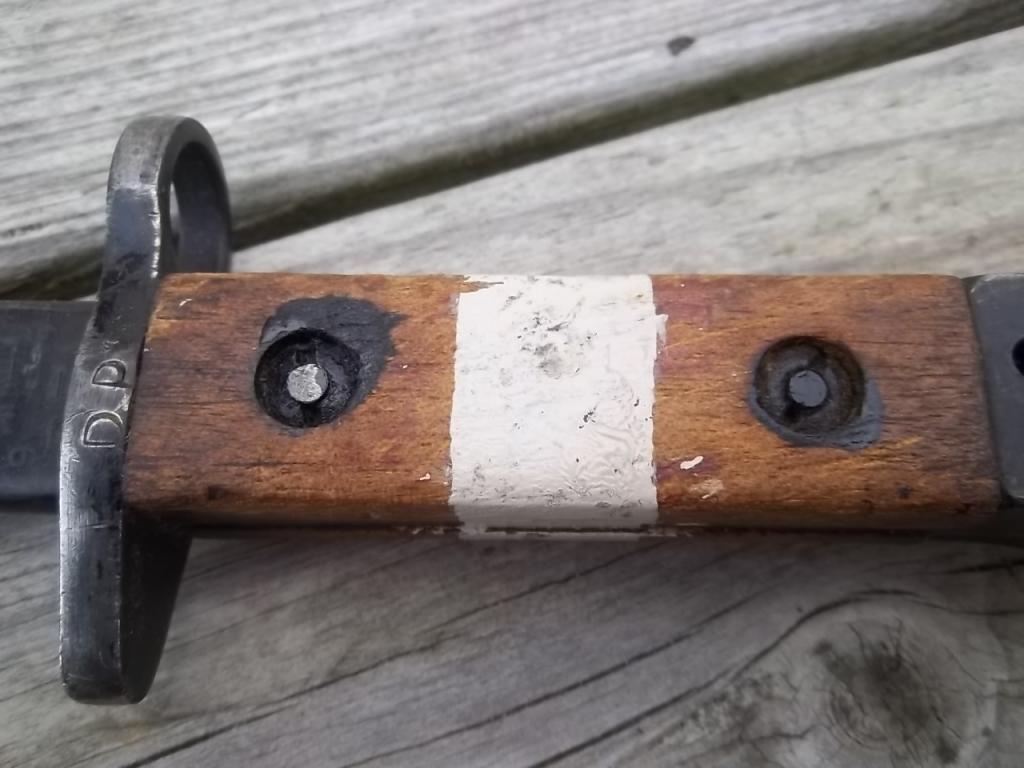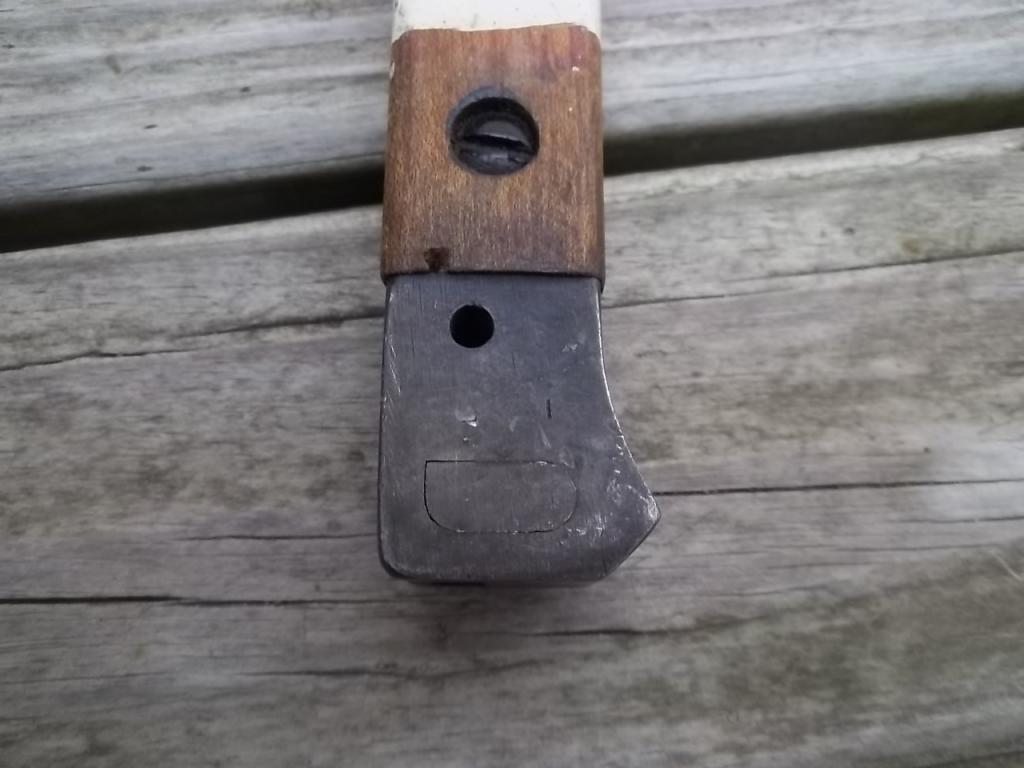-
FREE MEMBER
NO Posting or PM's Allowed

Peter,
WOW! You are definitely a statesman!  I read your statement several times, and I was moved to tears! LOL!
I read your statement several times, and I was moved to tears! LOL!
You articulated the point on leaving it as is, so well, I believe I am going to keep it as a DP rifle. As recommended, I am going to look into the Indian markings, and refinish accordingly. You are correct on the "marking" of the rifle. I have not seen a DP rifle so well marked. Hence I believe that I would regret altering it.
As you can appreciate, this will take some time to complete (rifle refinishing isn't my full time job)! I am also going to take some careful photo's before I do much with the rifle. As they say, "a picture is worth a thousand words". 
I do have an Indian Bayonet inbound as we speak. What sold me on it, was that it also is marked "DP".
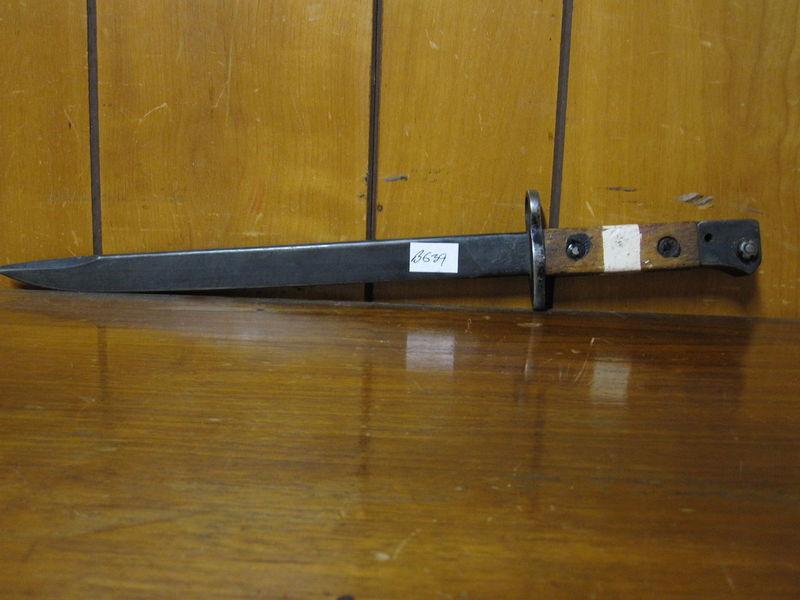
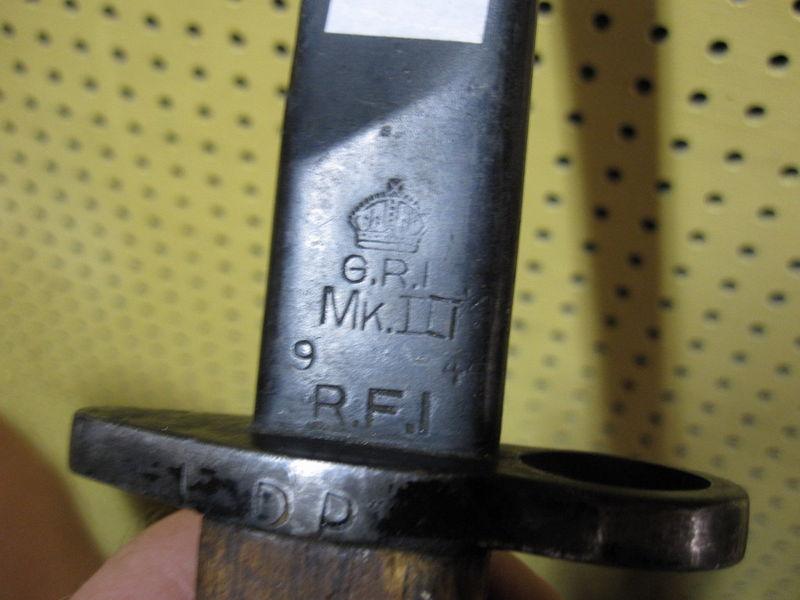
I assume (but can be corrected) that this also stands for Drill Purposes. It is also from 1944 (not 1959). However, it is a start to getting the "kit" put together.
As for the sling, I am looking at a post war Brit sling until I can find something Indian marked. Any pointers in what an Indian sling would be marked with, would be appreciated. I am keen on getting the colors and fittings correct.
The easy thing for me to do, is clean up the wood. I am questioning the finish, since as was pointed it, this appears to be rather shiny. Would a "DP" rifle be shiny, or closer to what an actual rifle would look!
I am also looking at what type of paint to apply. I know that many people have been using "gunkote" or such finishes with good success.
As I mentioned before, this Forum has taught me much. I only hope that I can reciprocate as I restore this rifle to is proper glory!
-
09-14-2011 07:31 PM
# ADS
Friends and Sponsors

-
Legacy Member

DP rifles
As a side branch to collectiing the Lee Enfield family, I have a group I call my 'painted rifles", these are generally DP's etc and I find them very interesting, and cheap to collect.
I have not seen an Indian marked DP SMLE in Australia , and would jump at this one if it came along. I do have a Indian P14 similaly marked with 1 inch bands to the mag/receiever.
, and would jump at this one if it came along. I do have a Indian P14 similaly marked with 1 inch bands to the mag/receiever.
I really would not do too much to it at all, without being able to have a close look, I would bet what is exactly how it left service.
The Indian Mk III * bayonet is the perfect match to this rifle.
Well done.
-
-
FREE MEMBER
NO Posting or PM's Allowed

-
FREE MEMBER
NO Posting or PM's Allowed

-
Legacy Member

It would be a good idea to make sure the firing pin is shortened as people brought up on mousers may not realise the chamber is drilled - hard on the fingers !
-
-
We had DP bayonets in UK Military service but they weren't generally seen. There were a few spike and No9's in the Puiblic school Cadet Forces and some SLR bayonets at the central recruit training depots but they all had rounded tips and blunt edges to the blades. I've yet to see a DP SA80 bayonet except for one solitary one (and a very early, and rare 85 dated/serially numbered one at that too.............) that was used during a SA80 DP rifle trial.
Military service but they weren't generally seen. There were a few spike and No9's in the Puiblic school Cadet Forces and some SLR bayonets at the central recruit training depots but they all had rounded tips and blunt edges to the blades. I've yet to see a DP SA80 bayonet except for one solitary one (and a very early, and rare 85 dated/serially numbered one at that too.............) that was used during a SA80 DP rifle trial.
Our L1A1's Brens/L54's and L59 rifles etc etc etc all had white bands around them somewhere in a hard specified enamel paint that was difficult to remove with the DP in black. India used the red/white bands as its DP mark so it makes me think that while Middy's DP bayonet is the real McCoy, it would have red/white bands. Maybe you bayonet fiends can advise him
There doesn't seem to be anything documented in the EMER's or AESP's (you got any current AESP info Skippy or Tankie.......) about DP spec bayonets and nothing in the old 70's V-150 EMER
-
-
FREE MEMBER
NO Posting or PM's Allowed

If I had this rifle Middy, I'd be thankful that I have something that is reasonably unusual, well marked, usually unloved but another of the genuine lineage of
Enfield Rifles
that would fit well within any Enfield collection anywhere in the world..........
I agree with this statement almost entirely as the "dodgy" rifles I have acquired have been the source of most interest and learning. My own No1 has gone through EY to DP and back to "In proof" NOT!. Unfortunately from what I can gather, at least where I live, there is lately apparently no concept of "collecting" for many of us, so we must use the rifles we own.
Should all DP rifles perhaps be de-activated when Identified to avoid dastardly folk from grinding of the DP marks and selling them on as shootable with the possible associated risks?.
I wonder if it is legal in England to sell on a DP rifle as I don't see how they could be considered to be "In proof" when so obviously been condemned by the experts!. Or could it actually be re-proofed in civvy street when covered in DP marks?.
to sell on a DP rifle as I don't see how they could be considered to be "In proof" when so obviously been condemned by the experts!. Or could it actually be re-proofed in civvy street when covered in DP marks?.
Is there any point in having a live firing DP rifle when you can't shoot it?.
Just the thoughts of a confused and naive beginner.
-
As I understand it JSS, when you've had a licence for a few years and have started to specialise and importantly, had a few articles published - or even a book or two, then you steer a path into the specialised 'collecting' area which is a good and valid reason to possess. That's as I understand it. Don't loose heart....... Just hang on in there and before you know it your Lee Enfields become your specialiased area of your 'collection'. What about a 'collection' of non firing DP's
As a matter of interest, as I've got a tenuous interest in these DP's as I formulated the 'plan' as they call it for the UK MoD DP's but does anyone have a smalish collection of them?
MoD DP's but does anyone have a smalish collection of them?
As I said, it doesn't affect me as my collection is owned by the Army. Can any others pass on some encouragement
-
-
FREE MEMBER
NO Posting or PM's Allowed

JSS,
I build guns on other forums aside from this collector site. 90% of the "rifles" that I own, I don't shoot or have ammunition for them. Therefore the drive to "shoot what I own" isn't there for me. I enjoy collecting for collecting sake, and shooting for shooting sake... If I have a shooter, I take it out to my back porch. If it is a safe queen, it is marked as such, and kept to show people the history of firearms development.
As mentioned by Rowdy, the holes in the chamber COULD be ID'd as vent holes to an Initiate.... however, this rifle was clearly used for training purposes... up to cleaning the bore. Jamming a rod through the bore would NOT stop this rifle from being easily "restored". I will check the FP when I get a chance. However, with the bolt easily swapped out, this is still an issue.
DP rifles from various eras (in the States for example) exhibit different way to de-activate. I think that methods have "increased" as it became apparent that Folks could repair the rifles. As a recent example, many "non-rifles" regularly have the barreled welded to the receiver... AND the receiver cut away under the wood.
As to a live firing DP.... the concept would be to sub cal the rifle... to a safe pressure such as 9mm Nato or 22lr. I believe this was actually done in a Shotgun News were the gunsmith subcal'd a rifle down to 22lr. As ya'all know, attempting a "full power" round restoration is dicey due to hoop pressure and metallurgy. Grenades are a good example.
The other problem with activating DP's that you don't know the reason on why it was DP'd. As was pointed out: stretched receiver, cracks, damage or just a good extra rifle.
Frankly, short of instituting draconian rules, and reducing a rifle to smoldering slag via a torch, you will never stop "enterprising" individuals from showing off their dare devil or machining skills to spit in the face of gov't intervention.
I think that the statement has come out via the 1903 forum, is that you should notifiy a buyer that this rifle was a former DP gun, if you choose to re- activate it. Not everyone does this, so it goes back to "buyer be ware".
What has set this rifle apart from regular torched rifles, I believe, is the manner in which it was DP'd and documented.
-
FREE MEMBER
NO Posting or PM's Allowed

All,
Back to the clean of up this DP rifle!
After gently cleaning the surface with a water based 3M paint stripper, and an old tooth brush, I have found this....
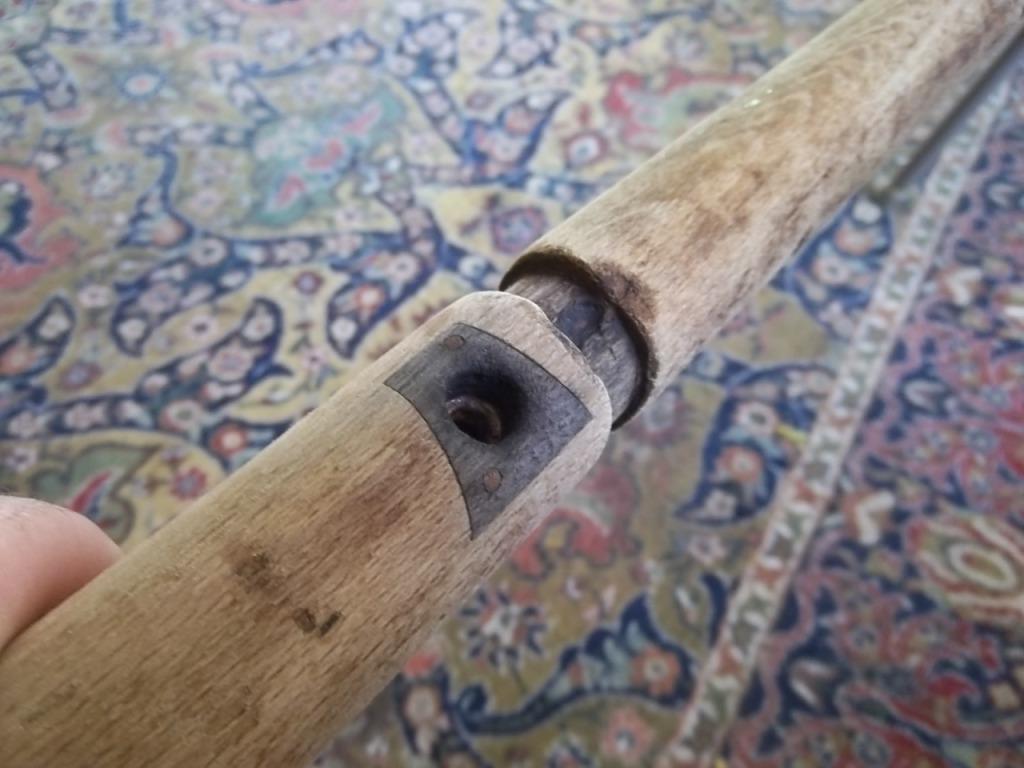
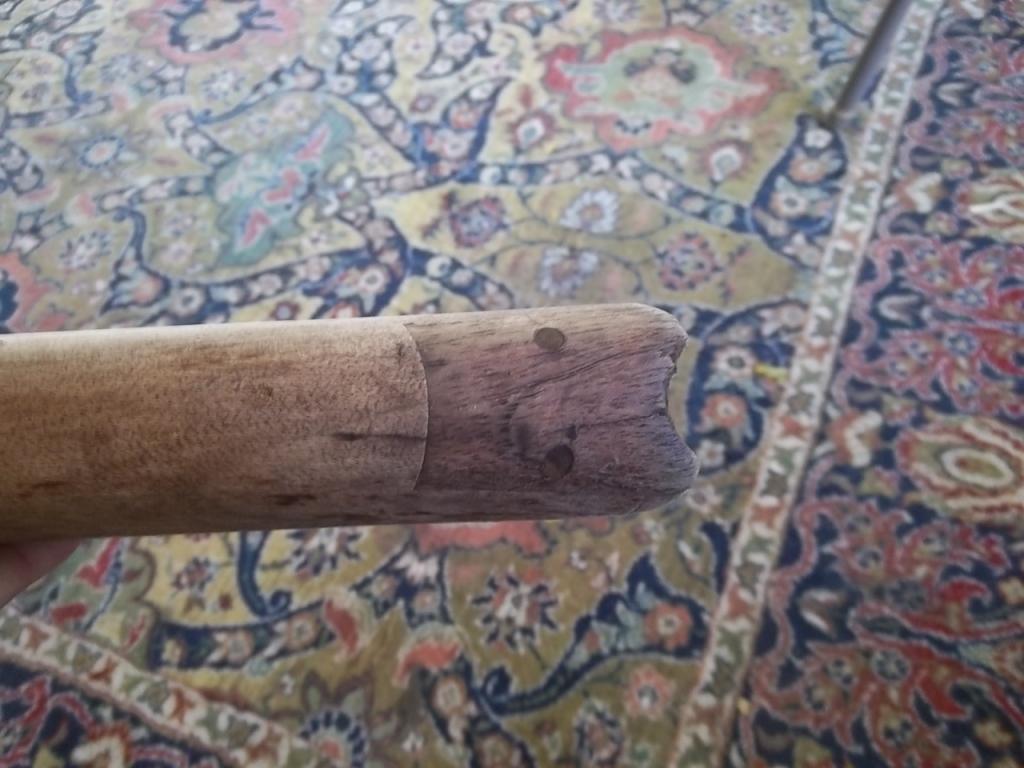
Two interesting repairs. I think that these will definitely give the rifle some character after I put it together. Arsenal repairs are not new or scary things... just part of the rifle history!
One thing that I do have to repair, is this crack, which I found while cleaning up the rifle. Left unattended, this could lead to a major problem in the future...
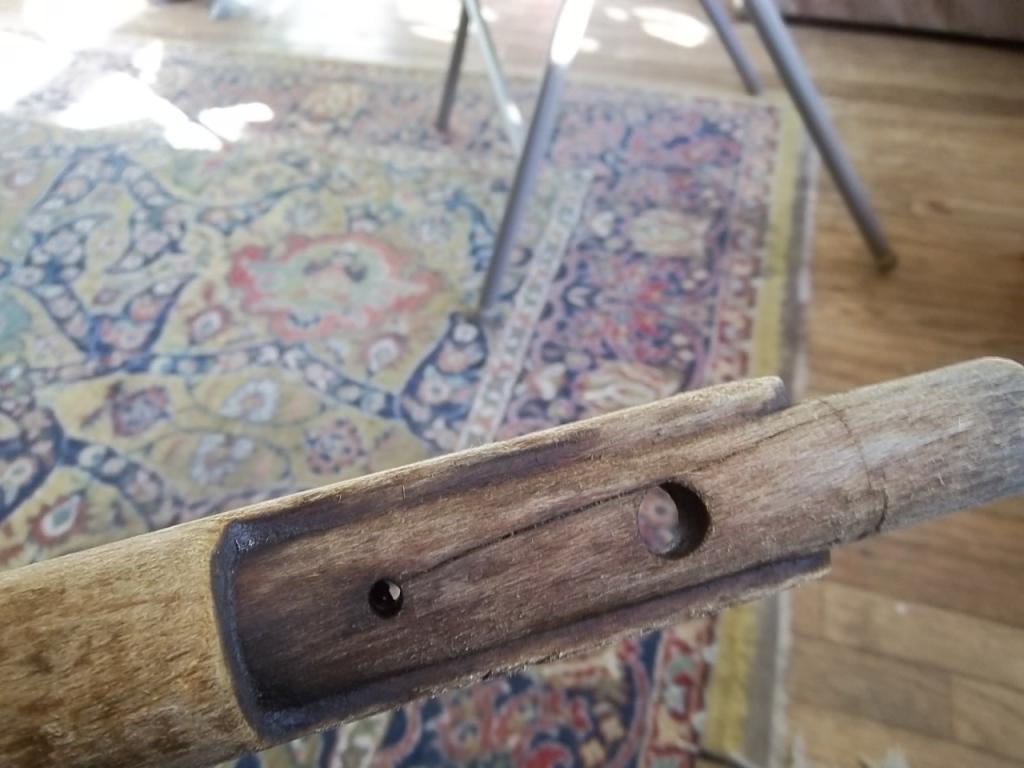
The wood is solid in this region, so this should be an easy repair.
Careful cleaning leads to the preservation of the DP marks and cartouches on the stock...
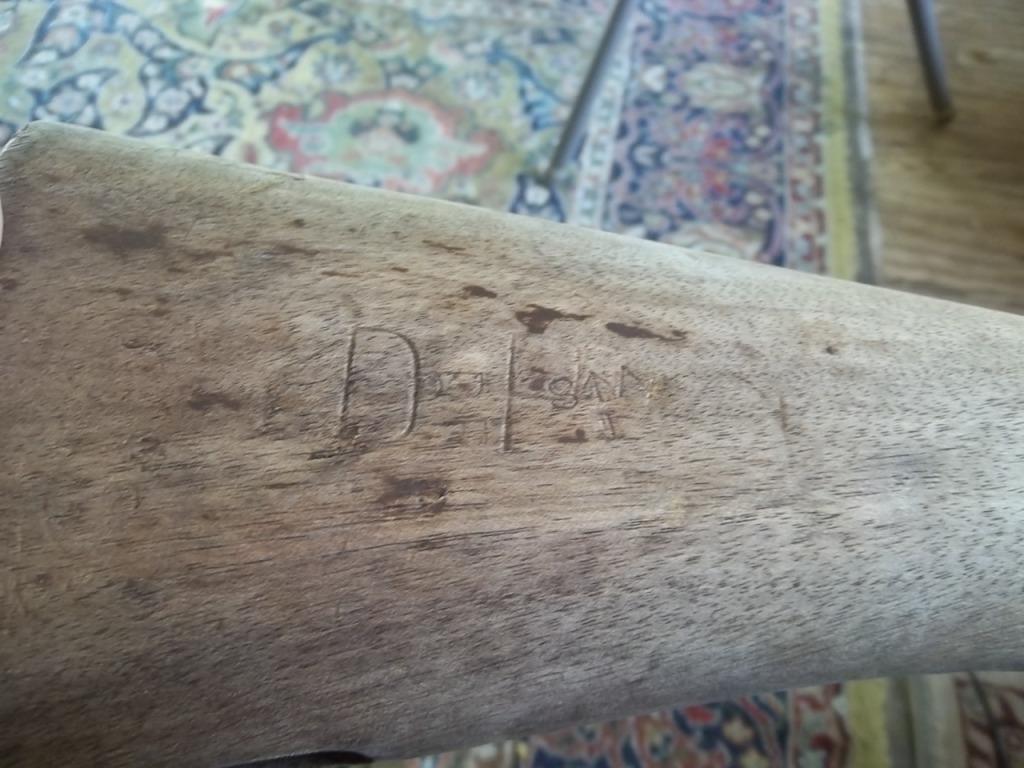
As you will note, the magazine was clearly painted... however, there was little to no evidence of this being done to the receiver/ stock region... after peeling off some layers of grunge, this is what you find...
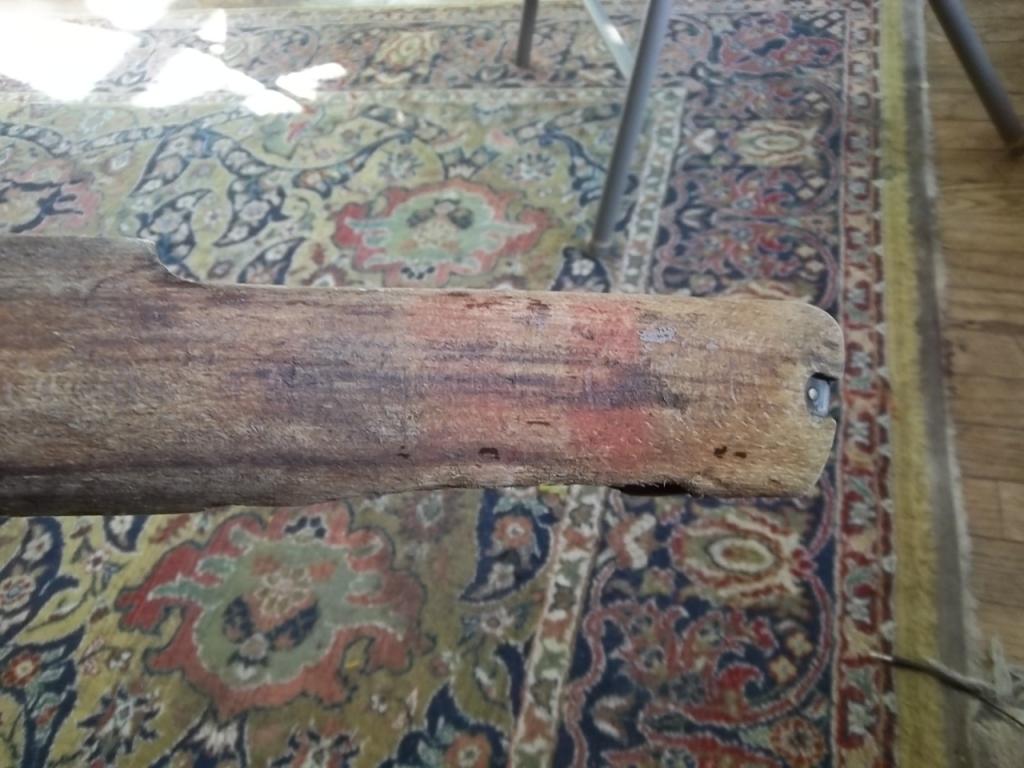
The wood was clearly "banded". No shock there!
There are still dark splotches of stuff on the stock. I am going to use some turpentine to clean that off. Moving forward!
I read your statement several times, and I was moved to tears! LOL!




















 Register To Reply
Register To Reply








